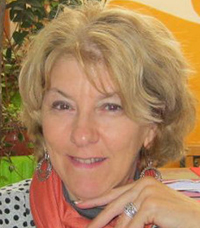The beauty of the Mediterranean Sea, with its various shades of turquoise and cobalt blue is a stunning, regional icon of the French Riviera. A multitude of boats and yachts of all sizes can be seen docked in the various ports and/or drifting at sea, dotting the ocean’s landscape. Unfortunately, these two luxurious entities don’t co-exist without detrimental, environmental consequences to the overall, fragile eco-systems and marine life.
Toxic discharge from boats is the leading cause of damage to the marine environment. With the proliferation of yachts being built and the average size becoming bigger, the yachting industry has a direct impact on the overall situation.
Grey water discharge is from sinks and showers and is the largest polluter of coastal areas, according to environmental experts. Reportedly, there are no regulations on grey water being discharged into the ports.Black water discharge is from toilets, with protective regulations in place by Marpol:
“Contains requirements to control pollution of the sea by sewage; the discharge of sewage into the sea is prohibited, except when the ship has in operation an approved sewage treatment plant or when the ship is discharging comminuted and disinfected sewage using an approved system at a distance of more than three nautical miles from the nearest land; sewage which is not comminuted or disinfected has to be discharged at a distance of more than 12 nautical miles from the nearest land.”
(Source: International Marine Observation)
Environment Yacht Services – the largest supplier of environmentally friendly cleaning products on the French Riviera and advocate of cleaning up the seas through awareness, a recycling program, and responsible yachting practices, states that nearly 100% of yachts are discharging black water directly into the sea.
Products commonly used on board are for household use and need to be processed through a wastewater treatment plant to remove toxic elements. If not, the toxins remain intact, with phosphates from laundry promoting growth of oxygen-robbing algae that suffocates fish. Changing to eco-friendly laundry and dishwasher detergents can reduce a boat’s toxic discharge by up to 60%. Additionally, boats can help alleviate the current situation by pumping out their tanks on a more regular basis.
Posidonia seagrass, a protected species that is endemic to the Mediterranean makes up 25% of the sea’s biodiversity, with 1 m2 producing more oxygen than 1 m2 of Amazonian forest. The seagrass, which holds rich marine life and protects beaches against erosion, is being damaged by boats’ anchors, as they drag across the seabed, and is also being threatened by invasive toxic algae. Growing very slowly, at a rate of 1-2 cm. per year, the Posidonia seagrass is a fragile part of the major ecosystem.
According to the Marine Observatory, St. Tropez’s world famous Pampelonne Bay comprises 4.5 km of sandy beaches, 27 beach clubs, and up to 300 boats at anchor, including 70 yachts – an important industry for the local economy. To heighten awareness through communication in the boating community, in order to balance human activities with the protection of natural habitats in the bay, measures are being taken:
* Boat patrols by the Marine Observatory
* Cooperation with yacht clubs and organizations
* Marking the boundaries of seagrass beds
* Free anchorage areas
* 1/3 reduction of swimming areas
* Mooring areas for small, medium, and large boats
* Forbidding anchorage on seagrass
Although the Mediterranean Sea is relatively small in size, it is a major shipping channel with roughly one-third of all international cargo traffic passing through it. It takes about 84 years for the sea to totally circulate, due to its having limited tides and being almost totally landlocked. Therefore, it is vital that this area be protected from pollution and the disappearance of grafil ecosystems. Let’s all do our share!
by Kim inFrance blogger Kim Defforge.
Kim is a lifelong Francophile, and former French teacher. Having moved from the U.S. to the French Riviera, she enjoys writing about France and French culture on her blog, 24/7 in France. From the simple beauty of a Mediterranean sunset to her passion for all things French, Kim shows us that dreams can come true!
Kim Defforge is the author of "Solitary Desire: One Woman's Journey to France" and "Sun, Sea & Savoir-Faire: Travel Focus on the French Riviera".
Read Kim's other Expat Focus articles here or click the button below to view her own blog…


